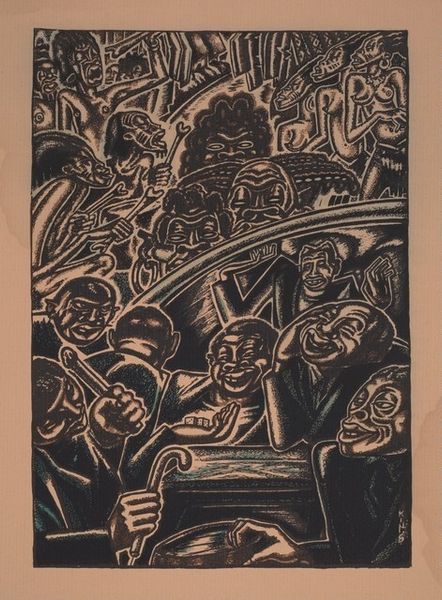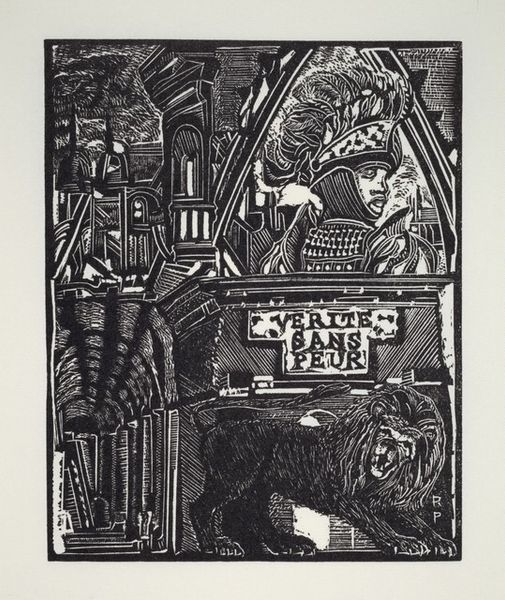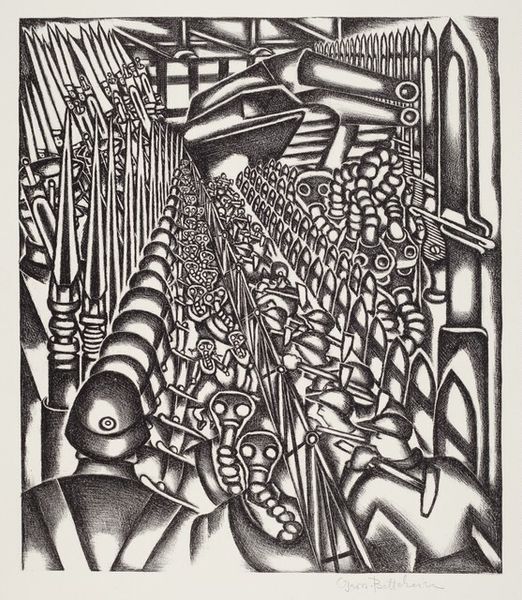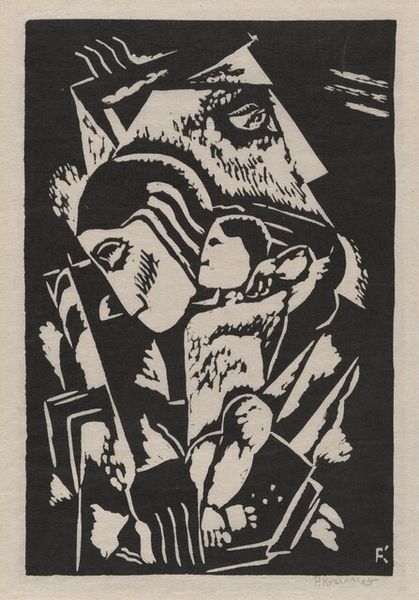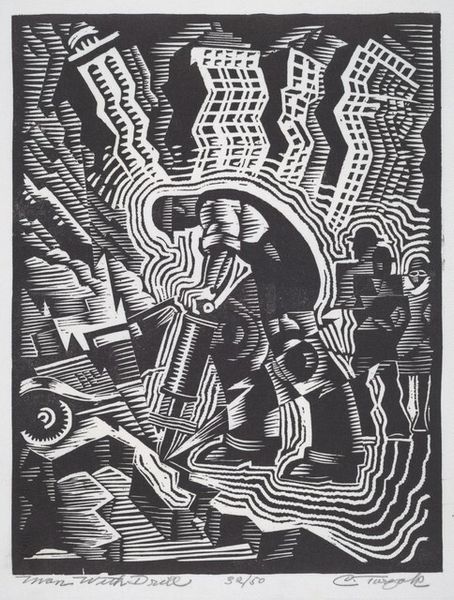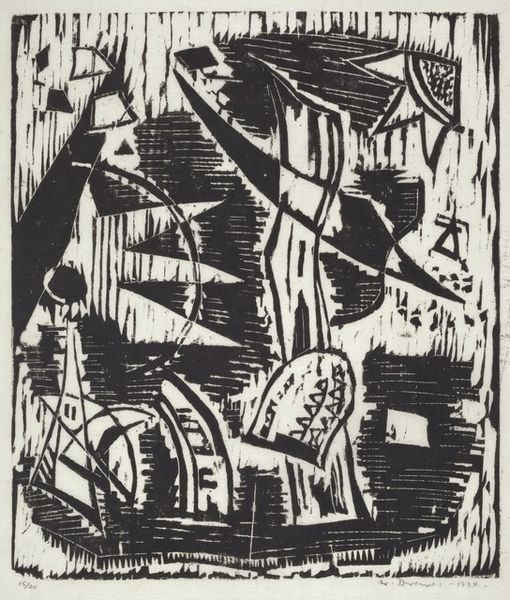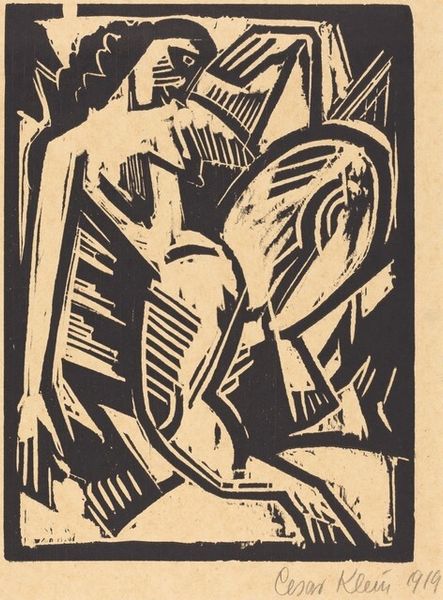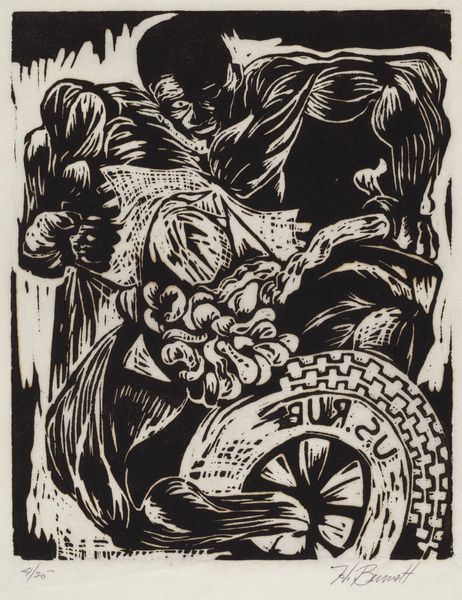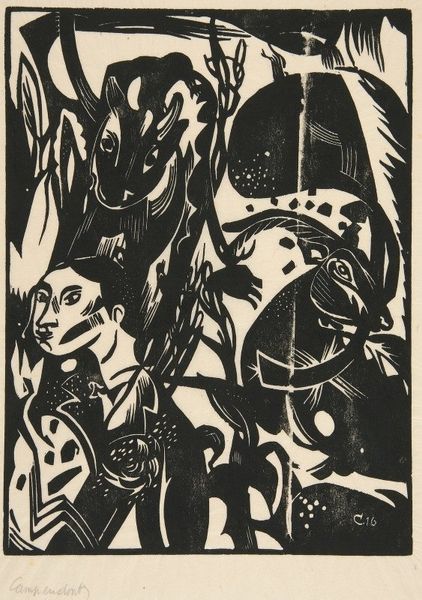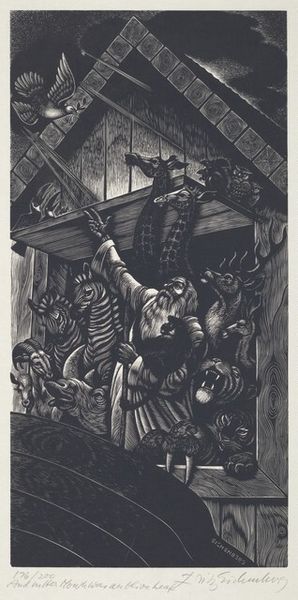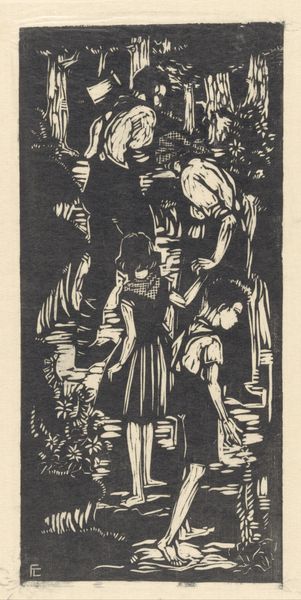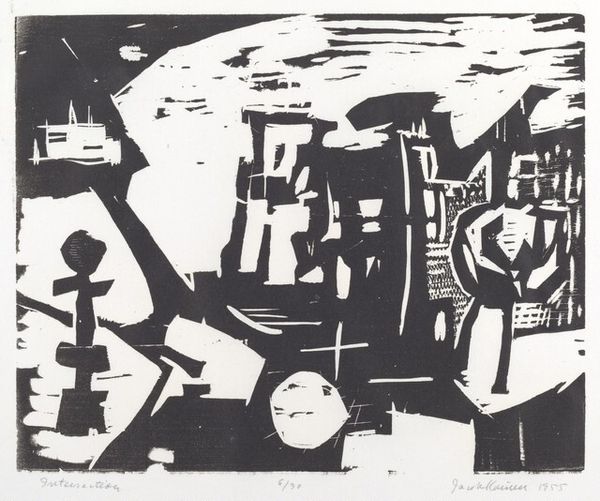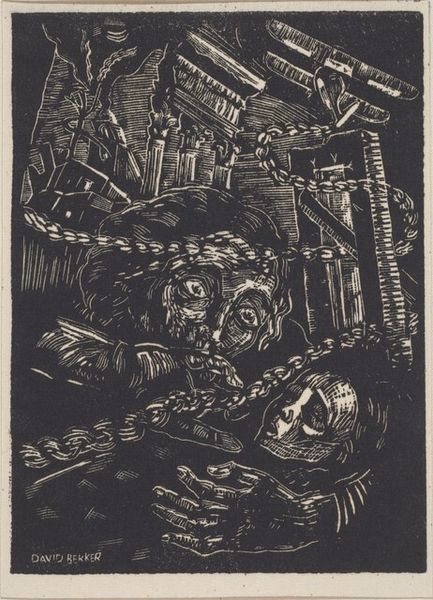
print, woodcut
harlem-renaissance
figuration
woodcut
cityscape
genre-painting
Copyright: Hale Woodruff,Fair Use
Curator: Let’s take a moment to consider Hale Woodruff’s “Sunday Promenade,” a compelling woodcut print from 1935, placing it firmly within the Harlem Renaissance. Editor: It has such striking contrasts! The use of black and white creates these figures almost bursting with energy from the scene. It feels like a compressed space. Curator: Compression is a good word. Woodruff employs this intense visual language, born from the legacy of racial injustice and segregation, but simultaneously he constructs an active stage for self-definition. These figures project both respectability and community. Editor: Right, look at their hats and elaborate sleeves. I notice a hierarchy present within the composition. We look up toward these figures and their postures. Can we say their clothing signifies this? It communicates power and social position within the community. Curator: Precisely, Woodruff is engaged in crafting and displaying Black identities, in this time of deep socio-political change. He's offering them self-possession against the backdrop of marginalization and oppression. And within that architecture, the church becomes this subtle beacon of community strength and solidarity, despite it being on the horizon. Editor: Indeed, this vertical lift in the built environment mimics the people as well. I also find myself reflecting on the choice to portray this genre scene in black and white. Do we miss something from not having the coloring? Curator: Black and white gives the print this historical immediacy. It emphasizes the formal and aesthetic qualities within a range of complex sociopolitical dialogues. Woodruff has strategically chosen this medium, engaging with discussions around racial identity and power. Editor: Ultimately, the viewer is invited to think beyond the superficial impression and consider deeper meanings of cultural identity. The artwork leaves you in a place of contemplation, even mourning, as one reckons with it all. Curator: It's Woodruff's way of immortalizing the lived experiences and realities, as they persisted and thrived against the historical landscape, while demanding space.
Comments
No comments
Be the first to comment and join the conversation on the ultimate creative platform.
